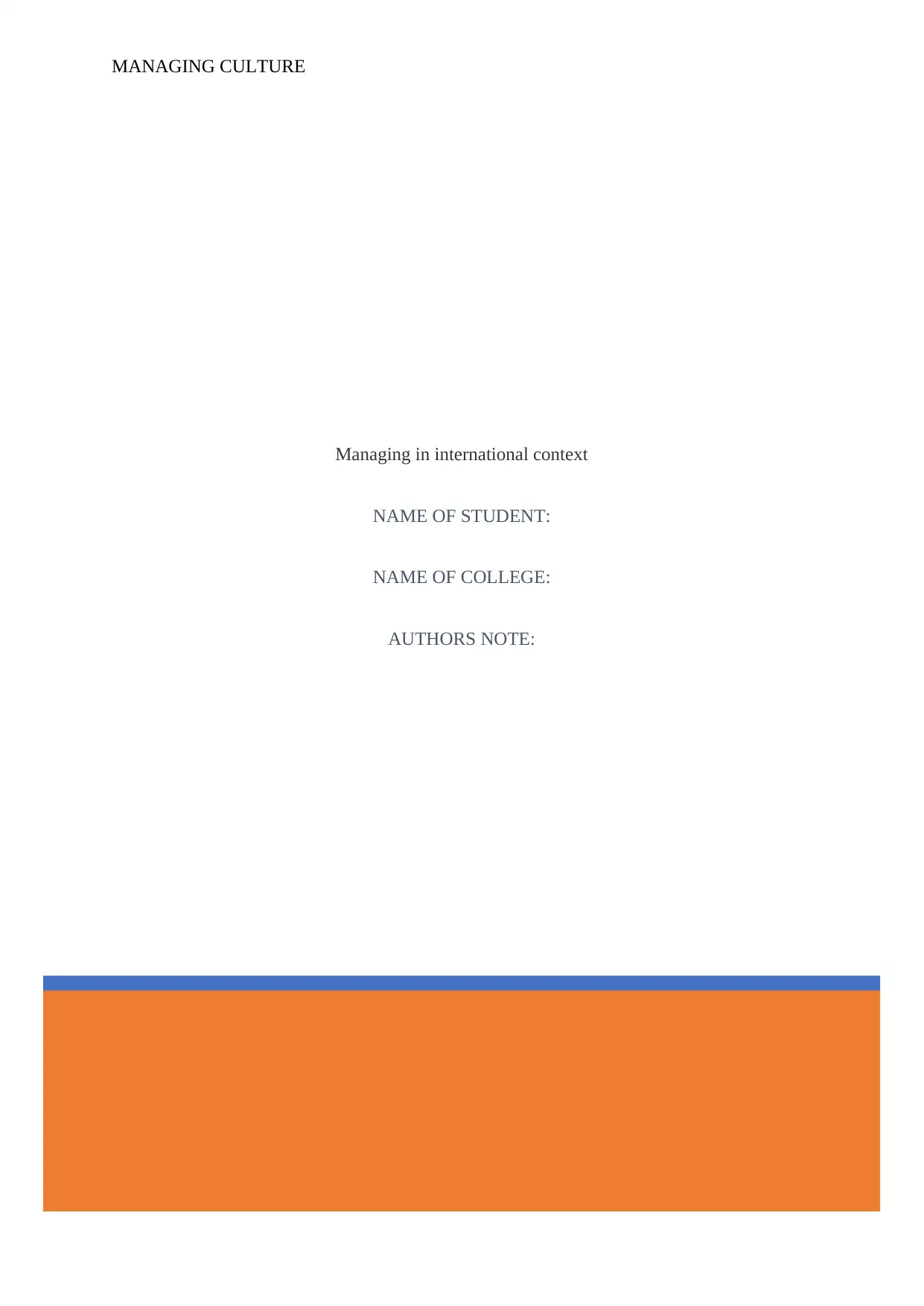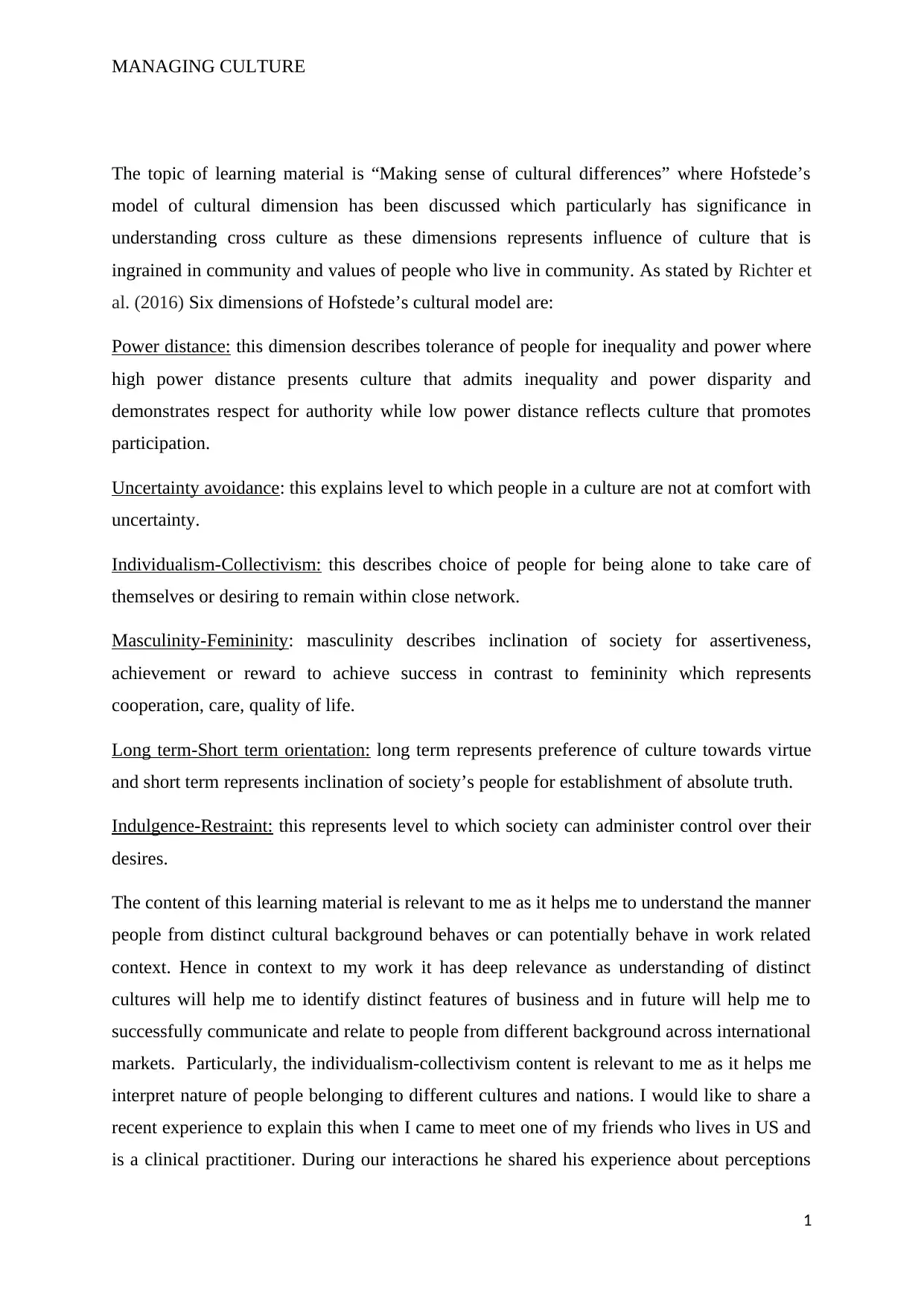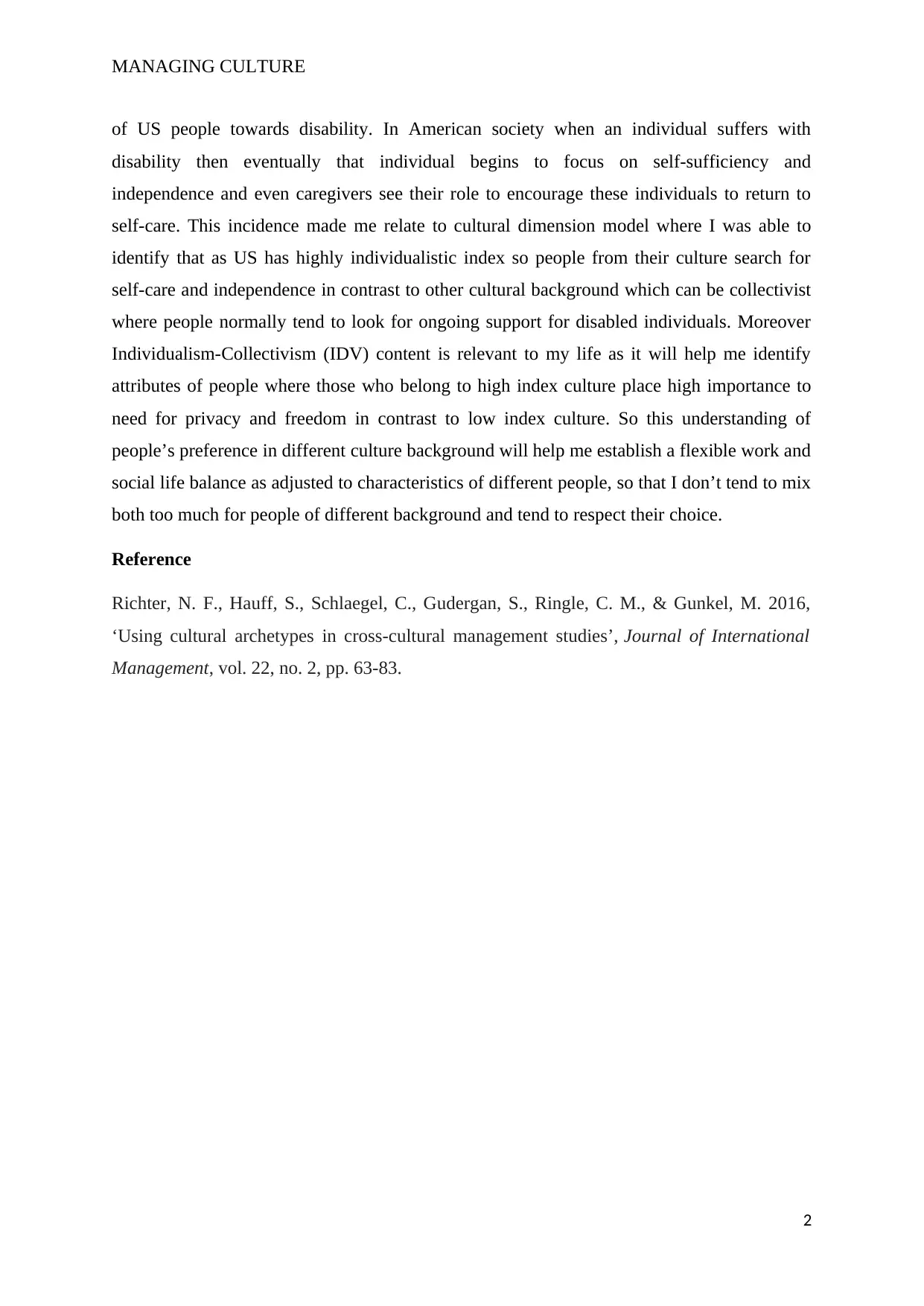Managing Culture: Reflection on Hofstede's Model and Experiences
VerifiedAdded on 2023/01/19
|3
|643
|43
Homework Assignment
AI Summary
This assignment is a reflection on the concept of managing culture, particularly in an international context, based on the learning materials provided. The student explores Hofstede's model of cultural dimensions, including power distance, uncertainty avoidance, individualism-collectivism, masculinity-femininity, long-term/short-term orientation, and indulgence-restraint, and how these dimensions influence cross-cultural interactions. The reflection includes a personal experience related to individualism-collectivism, highlighting how cultural understanding can influence perceptions and behaviors. The assignment emphasizes the relevance of cultural understanding in a work-related context, specifically in communicating and relating to people from different backgrounds across international markets, and how it will help in establishing a flexible work and social life balance. The student also references a relevant academic paper.
1 out of 3









![[object Object]](/_next/static/media/star-bottom.7253800d.svg)